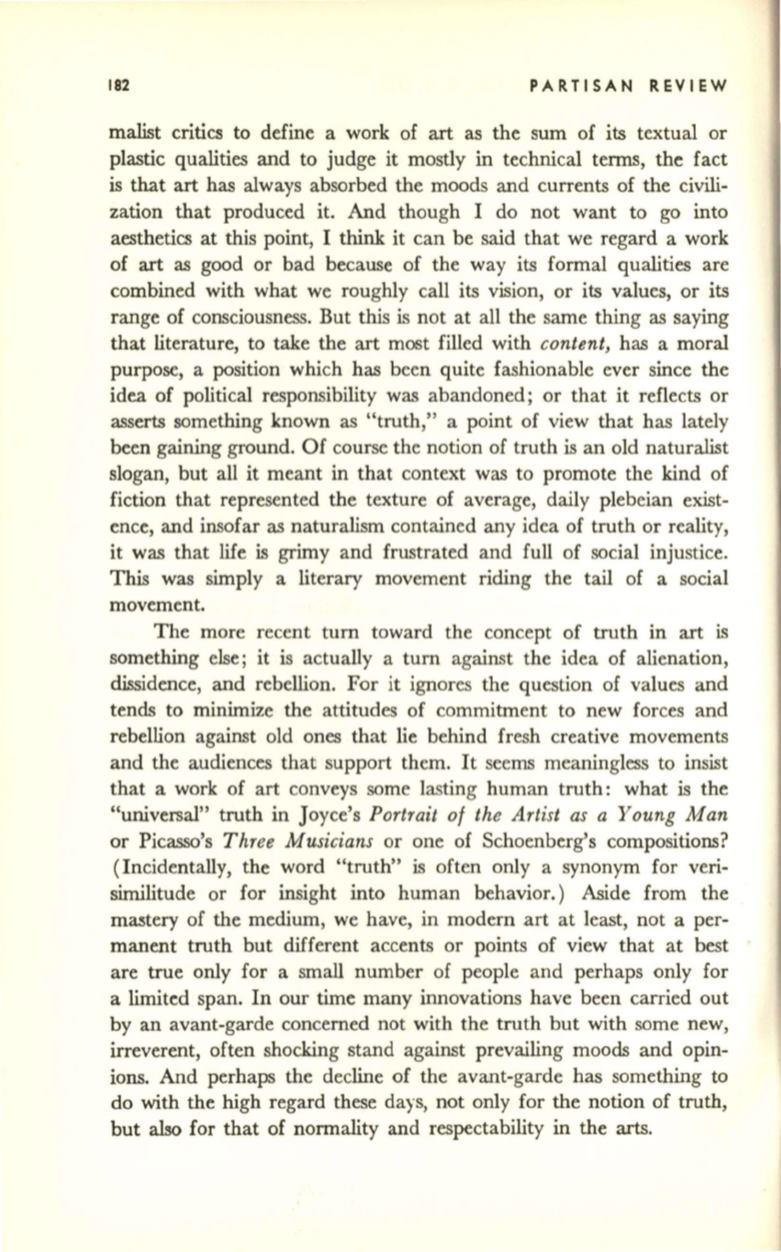
182
PARTISAN REVIEW
malist critics to define a work of
art
as the sum of its textual or
plastic qualities and to judge it mostly in technical terms, the fact
is that
art
has always absorbed the moods and currents of the civili–
zation that produced it. And though I do not want to go into
aesthetics at this point, I think it can be said that we regard a work
of
art
as good or had because of the way its formal qualities are
combined with what we roughly call its vision, or its values, or its
range of consciousness. But this is not at all the same thing as saying
that literature, to take the art most filled with
content,
has a moral
purpose, a position which has been quite fashionable ever since the
idea of political responsibility was abandoned; or that
it
reflects or
asserts something known as "truth," a point of view that has lately
been gaining ground. Of course the notion of truth is an old naturalist
slogan, but all it meant in that context was to promote the kind of
fiction that represented the texture of average, daily plebeian exist–
ence, and insofar as naturalism contained any idea of truth or reality,
it was that life is grimy and frustrated and full of social injustice.
This was simply a literary movement riding the tail of a social
movement.
The more recent turn toward the concept of truth in
art
is
something else; it is actually a turn against the idea of alienation,
dissidence, and rebellion. For it ignores the question of values and
tends to minimize the attitudes of commitment to new forces and
rebellion against old ones that lie behind fresh creative movements
and the audiences that support them. It seems meaningless to insist
that a work of
art
conveys some lasting human truth: what is the
"universal" truth in Joyce's
Portrait of the Artist as a Young Man
or Picasso's
Three Musicians
or one of Schoenberg's compositions?
(Incidentally, the word "truth" is often only a synonym for veri–
similitude or for insight into human behavior.) Aside from the
mastery of the medium, we have, in modern art at least, not a per–
manent truth but different accents or points of view that at best
are true only for a smaIl number of people and perhaps only for
a limited span. In our time many innovations have been carried out
by an avant-garde concerned not with the truth but with some new,
irreverent, often shocking stand against prevailing moods and opin–
ions. And perhaps the decline of the avant-garde has something to
do with the high regard these days, not only for the notion of truth,
but
also
for that of normality and respectability in the
arts.


